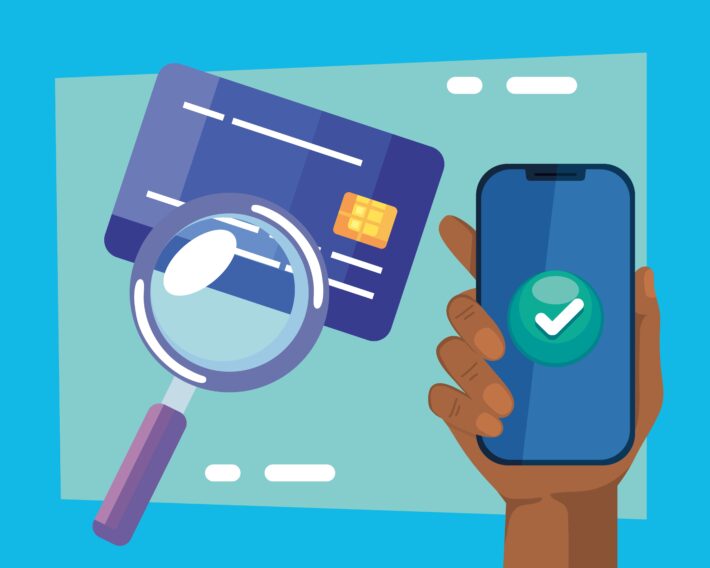Understanding The Basics Of Identity Verification Processes
In the current digital age, robust identity verification processes have become increasingly important. Verifying one’s identity is crucial for security and trust in various scenarios, from online transactions to accessing sensitive information. This exploration will cover the various types of identity verification processes, basics of identity verification, the steps they entail, common challenges faced, and ways in which businesses can improve their verification methods to ensure secure transactions and prevent fraudulent activities.
Let’s delve into the realm of identity verification.
What Is Identity Verification?
Identity verification is the process of confirming a person’s identity using various methods and technologies to ensure that the user is who they claim to be. It is a crucial aspect of security and authentication processes, especially in the digital realm where personal data and online security are paramount.
By verifying a person’s identity, businesses and organizations can establish trust, mitigate potential risks of fraud, and comply with regulations. The core processes of identity verification typically involve collecting personal information, verifying the authenticity of documents such as IDs or passports, and using biometric data or knowledge-based authentication. Understanding different verification methods, such as document verification, facial recognition, or two-factor authentication, is essential in creating a robust and comprehensive verification process that enhances security and ensures trustworthiness.
Why Is Identity Verification Important?
Identity verification plays a crucial role in ensuring the security and authenticity of user information, particularly in a time marked by a rise in identity theft and data breaches. It serves as a means of authentication that helps protect personal data from fraudulent activities.
Through the implementation of robust identity verification procedures, both individuals and organizations can significantly mitigate the risks related to unauthorized access to sensitive information. In the current digital landscape, where cyber threats are constantly evolving, the necessity for stringent authentication measures is more pressing than ever.
By verifying identities using multiple factors like biometrics, passwords, and security questions, users can have confidence that their data is shielded from malicious actors seeking to exploit vulnerabilities. Strong authentication practices not only bolster security but also foster trust among users, laying the groundwork for a more secure online environment.
What Are the Different Types of Identity Verification Processes?
Identity verification processes involve various methods such as biometric verification, document verification, Know Your Customer (KYC) checks, and compliance procedures to address identity fraud and ensure secure authentication.
Biometric verification utilizes unique physical characteristics like fingerprints, facial recognition, or iris scans to verify an individual’s identity. This method is highly secure because reproducing or forging biometric data is challenging.
Document authentication involves verifying official documents such as passports, driver’s licenses, or utility bills to confirm an individual’s identity.
KYC measures entail individuals providing personal information to verify their identity and prevent illicit activities. Compliance protocols ensure that businesses adhere to regulations and standards to deter fraudulent activities.
1. Knowledge-based Authentication
Knowledge-based authentication is a verification method that relies on personal information and security questions to validate a user’s identity. By confirming specific details that only the user should know, this process establishes trust and ensures secure access.
It operates on the concept that personal information, such as date of birth, address history, or previous transactions, can be used to verify an individual’s identity. Through a series of questions that only the legitimate user would be able to answer, knowledge-based authentication enhances security measures and mitigates the risk of unauthorized access. Trust plays a vital role in identity verification as users rely on organizations to safeguard their personal data. By employing this method, businesses enhance their credibility, build customer confidence, and establish a secure identification process.
2. Biometric Verification
Biometric verification involves using unique physical or behavioral characteristics like fingerprints, facial recognition, or iris scans to securely authenticate a user’s identity. This advanced authentication method improves identity management and ensures a secure verification process.
By utilizing individuals’ distinct biometric traits, biometric verification offers an exceptional level of security in identity authentication. Unlike traditional methods such as passwords or PINs that can be forgotten, stolen, or easily replicated, biometric data like fingerprints or facial features are highly unique and nearly impossible to duplicate. This uniqueness reduces the risk of unauthorized access, significantly lowering the likelihood of identity theft or fraudulent activities. The integration of biometric authentication in identity management not only boosts security but also delivers a seamless and user-friendly experience.
3. Document Verification
Document verification is the process of authenticating official documents like IDs, passports, or driver’s licenses to confirm a user’s identity. This step is crucial for identity proofing and ensuring the validity of identity documents.
Document authentication is vital in verifying the legitimacy of identity documents, enhancing the overall identity verification process. By confirming the authenticity of essential documents, organizations can build trust with individuals and prevent fraudulent activities. This verification step not only protects against identity theft but also aids in meeting regulatory requirements. Accurate document authentication enhances the credibility of the verification process, minimizing the risks associated with identity fraud and ensuring a higher level of security.
4. Two-Factor Authentication
Two-factor authentication is a security measure that requires users to provide two different forms of identification before gaining access. This method enhances identity validation and strengthens the overall security of the verification process.
One of the main advantages of two-factor authentication is its ability to significantly reduce the chances of unauthorized access, even if one form of identification is compromised. By combining something the user knows, like a password, with something they have, such as a mobile device for receiving authentication codes, the security risks associated with single-factor methods are minimized. This dual-layer security approach is particularly important in today’s digital landscape, where cyber threats are becoming more sophisticated and widespread.
What Are the Steps Involved in Identity Verification?
The process of identity verification involves gathering personal information, verifying it, comparing it with trusted sources, and making a decision based on this information. These steps are essential for verifying users, ensuring online security, and complying with Know Your Customer (KYC) regulations.
During the collection phase, individuals must provide official documents, such as government-issued IDs or utility bills, to verify their identity. After obtaining this data, additional verification methods like biometric authentication or two-factor authentication may be used for enhanced security. Subsequently, the collected information is checked against reliable databases to confirm its accuracy. It is crucial for organizations to maintain stringent data protection measures throughout this process to protect sensitive information and follow KYC guidelines effectively.
1. Collection of Personal Information
- The first step in identity verification involves gathering personal information like name, address, contact details, and identification documents.
- The use of identity verification tools ensures the validity of the collected data and sets up access control measures.
These tools are essential for confirming the accuracy of the information provided by an individual. By comparing the details with reliable databases, these tools help in identifying any inconsistencies or differences that could indicate potential fraud. Access control mechanisms further boost security by limiting unauthorized access to sensitive data. Employing strong identity verification tools not only protects against identity theft but also fosters trust between businesses and customers, strengthening the credibility of online transactions and interactions.
2. Verification of Information
Following the collection of personal information, the next step involves verifying the accuracy and authenticity of the provided data. This verification process is essential for identity theft protection and entails conducting comprehensive checks to ensure the information is valid and dependable.
One common method utilized in the identity verification process is the examination of documents such as driver’s licenses, passports, or utility bills to authenticate the individual’s identity. Verification checks may also include confirming the consistency of information across various documents provided. Organizations frequently utilize advanced verification technologies like biometric verification or knowledge-based authentication to bolster security measures and mitigate the risk of identity theft. By incorporating these verification checks, businesses can protect user data and reduce the likelihood of unauthorized access.
3. Comparison with Trusted Sources
Cross-referencing the verified information with trusted sources like government databases or credit bureaus is a crucial step in the identity verification process. The use of identity verification systems and software enhances the accuracy and reliability of this comparison.
Identity verification systems help ensure that the information provided by an individual aligns with legitimate records by comparing data from various reliable sources. These systems employ sophisticated algorithms and artificial intelligence to analyze and compare data points, identifying any anomalies or discrepancies that could indicate fraudulent activity. This rigorous verification process is vital in preventing identity theft, fraud, and other illicit activities, thereby protecting both individuals and businesses from potential risks and financial losses.
4. Decision Making
The final step in identity verification includes decision-making based on the verified information and compliance with cybersecurity protocols. Using secure identity verification solutions ensures that the authentication process is reliable and protects against fraudulent activities.
When making decisions during identity verification, it is important to consider factors such as the accuracy of the provided information, the legitimacy of the verification methods used, and the overall cybersecurity measures in place. User authentication is crucial in confirming the identity of individuals, whether through biometric verification, password authentication, or multifactor authentication processes.
By implementing robust identity verification solutions, organizations can improve their security posture by reducing the risk of unauthorized access and safeguarding sensitive data from potential breaches.
What Are the Common Challenges in Identity Verification?
Identity verification encounters various challenges, including fraudulent identities, human errors in data submission, and technical issues in verification processes. Overcoming these common challenges is crucial for maintaining the integrity and security of identity verification systems.
Fraudulent identities can result in data breaches and financial losses, underscoring the importance for businesses to implement robust verification measures. Human errors, whether intentional or accidental, can impact the accuracy of verification results. Addressing technical issues, such as system glitches or outdated software, is essential in ensuring seamless and reliable identity verification procedures. By effectively addressing these obstacles, organizations can enhance trust, comply with regulations, and safeguard sensitive information.
1. Fraudulent Identities
Detecting and preventing fraudulent identities is a crucial aspect of identity verification processes. Utilizing advanced fraud detection tools and identity verification APIs enhances the capability to recognize and address fraudulent activities effectively.
These tools aid in assessing multiple data points to verify users, incorporating biometric authentication, document verification, and behavior analysis. By leveraging machine learning algorithms and artificial intelligence, organizations can proactively combat sophisticated fraudsters.
Real-time monitoring of transactions and user activities can promptly identify any suspicious behavior. Consistently updating security protocols and conducting thorough KYC (Know Your Customer) checks also contribute significantly to upholding secure verification procedures to ensure the integrity and trustworthiness of user identities.
2. Human Error
Human error, like inaccuracies in data submission or processing, can present significant challenges to the accuracy of identity verification. To address this issue, it is important to implement strict data security measures, use reliable ID verification services, and establish standardized verification procedures.
Insufficient verification processes can result in security vulnerabilities that expose sensitive information to potential threats. By improving verification protocols with multi-factor authentication and biometric verification, organizations can reduce the risk of human error.
Regularly updating verification systems and providing comprehensive training for staff members responsible for identity verification tasks are essential to ensure effectiveness. Incorporating advanced technologies such as AI-driven identity verification tools can also enhance the accuracy and efficiency of the verification process.
3. Technical Issues
Technical issues, such as system downtime, integration challenges, or software malfunctions, can impede the smooth operation of identity verification processes. To effectively address and overcome technical challenges, it is crucial to implement robust anti-fraud measures, utilize electronic verification technologies, and partner with reliable verification service providers.
Incorporating advanced fraud detection mechanisms enables businesses to better protect sensitive customer data and prevent fraudulent activities. Electronic verification tools offer real-time authentication, streamlining the verification process and improving user experience. Verification service providers play a crucial role in keeping abreast of evolving technologies and implementing secure solutions to combat potential threats. Their expertise in navigating technical complexities ensures a seamless verification experience, fostering trust and confidence among both businesses and customers.
How Can Businesses Improve their Identity Verification Processes?
Businesses can improve their identity verification procedures by incorporating secure authentication methods to deter identity theft and discourage fraudulent activities. By giving importance to strong verification measures, organizations can protect user data and uphold trust in their online interactions.
Strong identity verification procedures are vital in upholding the credibility of online transactions. The use of multi-factor authentication, biometric verification, and continuous monitoring can significantly boost security measures.
It is crucial to regularly update verification protocols and remain vigilant about emerging risks to outsmart cybercriminals. Educating employees and customers on the significance of identity verification can also aid in preventing unauthorized entry and data breaches.
Investing in cutting-edge technologies such as AI-powered identity verification tools can streamline the process while ensuring precision and effectiveness.
1. Use Multiple Verification Methods
Utilizing various verification methods, such as biometric authentication, document verification, and two-factor authentication, can improve the security and reliability of identity verification processes. By incorporating a mix of secure identity verification tools and digital ID verification technologies, businesses can establish a strong authentication framework.
This approach not only aids in reducing identity fraud but also boosts user trust and adherence to regulatory standards. Biometric authentication enhances security by utilizing physical traits like fingerprints or facial recognition, increasing the difficulty of unauthorized access. Document verification validates the legitimacy of provided identification documents, lowering the risk of identity theft. Two-factor authentication adds an extra layer of security, necessitating users to verify their identity through a unique code or token. Together, these methods create a thorough and secure identity validation process.
2. Regularly Update Verification Processes
Regularly updating verification processes by incorporating automated verification technologies, secure document verification procedures, and remote verification capabilities can streamline identity authentication and enhance the efficiency of verification checks.
This proactive approach to identity verification not only ensures compliance with regulatory requirements but also helps protect businesses and their customers from fraud and identity theft. Automated verification reduces the risk of human error and speeds up the verification process, improving customer experience. Secure document authentication adds an extra layer of security by validating official documents provided by individuals, enhancing trust in the verification process. Remote verification enables seamless identity checks without the need for physical presence, saving time and resources for both businesses and customers.
3. Utilize Third-Party Verification Services
Utilizing third-party verification services that specialize in identity verification solutions can enhance fraud prevention measures, improve the security of verification processes, and ensure secure identity management practices. Partnering with reputable identity verification solutions providers allows businesses to access advanced tools and expertise to reinforce their authentication frameworks.
These third-party verification services serve as an added layer of security, providing a more comprehensive screening process that can aid in detecting and preventing fraudulent activities before they result in significant harm. By delegating identity verification processes to specialized providers, businesses can streamline their operations, enhance customer experience, and mitigate the risks associated with manual verification methods. This not only strengthens fraud prevention efforts but also saves time and resources, enabling businesses to concentrate on their core operations while maintaining confidence in their identity management practices.
Frequently Asked Questions
What is the purpose of identity verification processes?
The purpose of identity verification processes is to confirm the identity of an individual and ensure that the information provided is accurate and valid.
What information is typically required for identity verification?
Typically, identity verification processes require personal information such as full name, date of birth, address, and a form of identification such as a driver’s license or passport.
Why is identity verification important?
Identity verification is important for security and fraud prevention. By confirming the identity of an individual, organizations can protect sensitive information and prevent unauthorized access.
What are some common methods used for identity verification?
Some common methods used for identity verification include document verification, biometric verification, and knowledge-based authentication.
How does document verification work in identity verification processes?
Document verification involves verifying the authenticity of an identity document, such as a driver’s license or passport. This can be done through manual checks or through automated software.
What is biometric verification and how does it enhance identity verification processes?
Biometric verification uses unique physical characteristics, such as fingerprints or facial recognition, to confirm an individual’s identity. This enhances identity verification processes by providing a more secure and accurate method of verifying identity.



